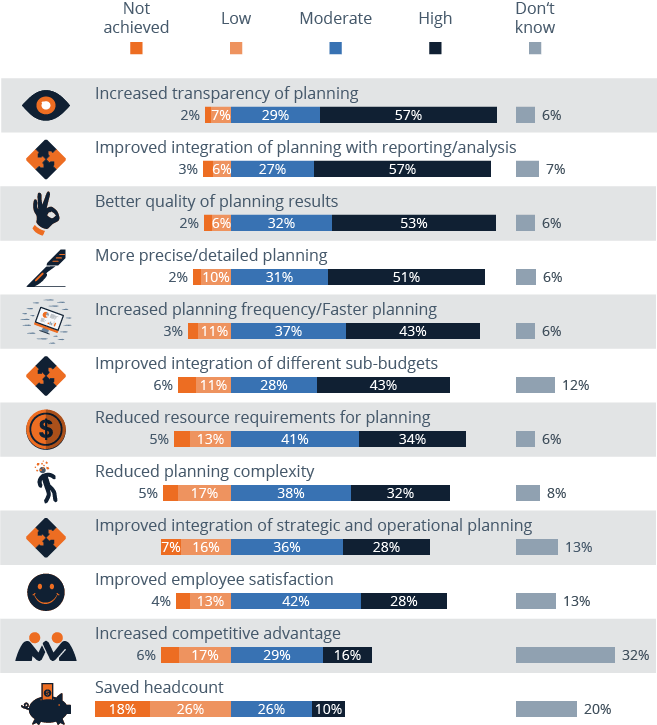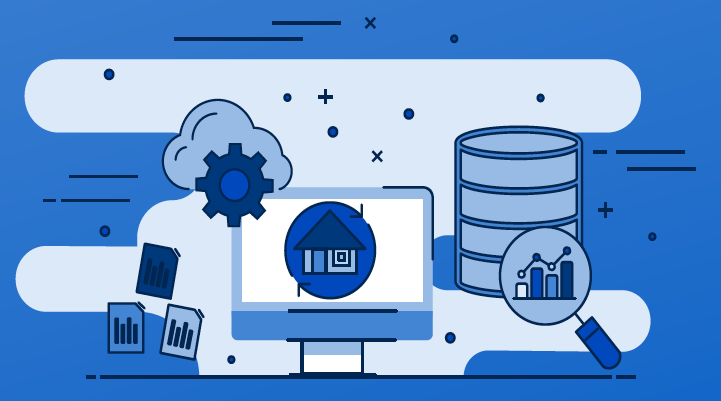Ultimately, the hope is to be able to outsmart and out-deliver competitors, while proactively addressing customer needs.
Planning and budgeting software should deliver benefits
In general, all planning and budgeting tools are used to achieve benefits in various areas and to make better decisions based on data. ‘Business benefits’ is possibly the most important measures of success in BARC’s Planning Survey 16, focusing on the bottom-line benefits of planning and BI projects.
Planning and budgeting software that does not deliver business benefits is superfluous. Unlike core transaction systems, planning and budgeting projects are optional, not mandatory, so they must pay their way in terms of providing business benefits.
The following potential business benefits were evaluated by survey participants in The Planning Survey 16:
- Improved integration of planning/budgeting with reporting/analysis
- Increased competitive advantage
- Improved integration of different sub-budgets (sales, production, HR, financials, etc.)
- More precise/detailed planning/budgeting
- Better quality of planning/budgeting results
- Increased planning frequency (shorter planning cycles) / Faster planning/budgeting
- Saved headcount (in business and/or IT departments)
- Improved integration of strategic and operational planning/budgeting
- Increased transparency of planning/budgeting
- Improved employee satisfaction
- Reduced resource requirements for planning/budgeting
- Reduced planning complexity
Our survey results demonstrate that ‘increased transparency of planning’, ‘improved integration of planning with reporting/analysis’ and ‘better quality of planning results’ are the top three benefits companies achieve with the use of their planning/budgeting software.
All specialized planning products analyzed in our survey are based on integrated data storage for actuals and plan data (‘single point of truth’).
Moreover, comprehensive functionality for centralized and decentralized – as well as top-down and bottom-up – planning approaches is available as standard to support individual planning processes. Integrated functionality for reporting, analyses and dashboarding typically rounds off the range of functions found in specialized planning software.
Some benefits are hardly achieved
In contrast to the main benefits, respondents see ‘saved headcount’ and ‘increased competitive advantage’ as relatively minor benefits for planners, which is understandable. Even with the best planning products, the task of planning requires a lot of effort for any company and the tools used can only support them in the process, not entirely automate it.
However, planning tools save a lot of time compared to other approaches, and companies can use the hours previously invested in manual efforts for more value-adding activities. From BARC’s point of view, businesses can certainly earn a competitive advantage with planning products by gaining deeper insights into their data and being more agile, enabling them to react to current and future developments in their businesses.
Follow the link to buy the full report: The Planning Survey 16






